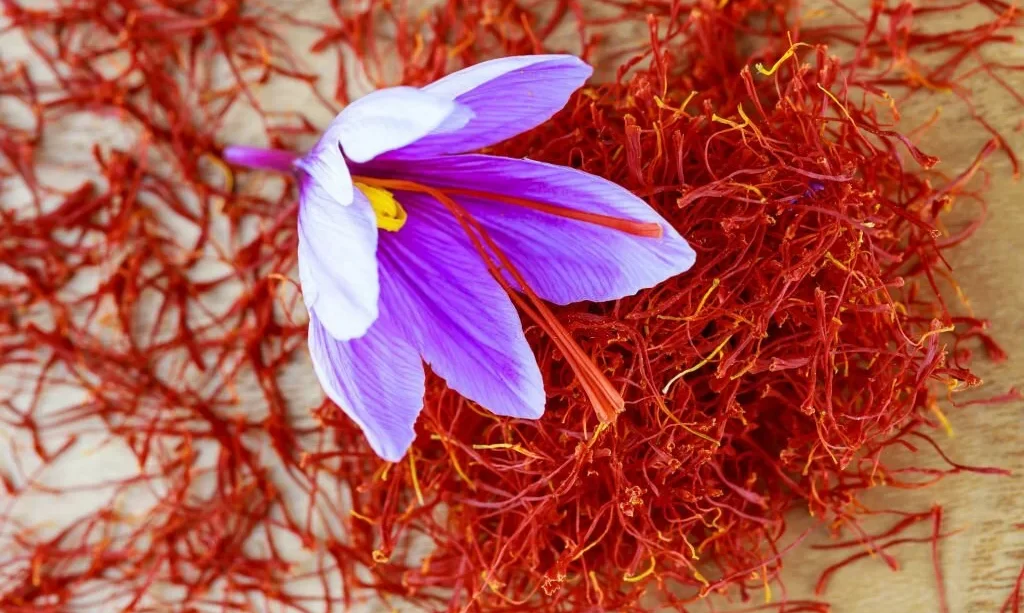Saffron, the “red gold” of the spice world, is renowned for its unique flavor, vibrant color, and intoxicating aroma. Derived from the crocus flower’s stigma, saffron has been treasured for centuries in both culinary and medicinal traditions. To fully unlock its potential, the process of blooming saffron threads is essential. This guide takes you through the art of saffron blooming, offering insights into selecting high-quality saffron threads and the critical step of preparing them. Blooming saffron is a culinary journey that enhances the depth and richness of your dishes, and the journey begins with choosing the finest saffron threads.
- Premium All-Red Saffron from the Saffron Crocus
- HIGH QUALITY: Handpicked Saffron threads, naturally dried, packaged in airtight container to preserve freshness
- SAFFRON FOR COOKING: Slightly sweet and earthy taste adds luxurious notes to wide variety of cuisines
- 100% PURE SAFFRON: High quality red Saffron threads free from additives and preservatives
Selecting Quality Saffron Threads
Saffron’s potency and flavor are directly influenced by the quality of the saffron threads you choose. Premium saffron possesses distinct qualities, including a rich, deep red color, a fragrant aroma, and a complete absence of adulterants or additives. When selecting saffron, look for threads that appear deep red, almost maroon, as this indicates their quality and potency. The aroma should be strong and distinctly saffron, while the presence of any other ingredients should be absent. To ensure you acquire high-quality saffron, consider purchasing it from reputable sources that provide detailed information about the saffron’s origin and quality.
Preparing the Saffron Threads
The process of blooming saffron begins with properly preparing the saffron threads. This involves gently toasting or heating the threads to unlock their full potential. One method is to toast the saffron threads in a dry skillet over low heat for just a few seconds. Alternatively, you can achieve the same effect by soaking the threads in warm water for about 15-20 minutes. Whichever method you choose, it’s essential to avoid overtoasting or overheating the saffron, as this can compromise its delicate flavor and color. Correct preparation sets the stage for the next crucial step: blooming saffron to release its rich, aromatic essence.
Blooming Saffron Threads
The art of blooming saffron threads is where the magic happens. Blooming saffron involves steeping the prepared threads in warm liquid, allowing them to release their precious flavor and color. To achieve this, aim for a liquid temperature between 100-120°F (40-50°C) for optimal results. A good rule of thumb is to use a warm liquid, not boiling, as high heat can diminish saffron’s unique qualities. The steeping process generally takes about 15-20 minutes, during which saffron threads slowly release their flavors and colors into the liquid. The result is a beautifully colored, intensely aromatic infusion that enhances the character of your dishes.
Incorporating Bloomed Saffron
Once you have successfully bloomed your saffron threads, the next step is to incorporate this aromatic infusion into your culinary creations. Saffron can be a star ingredient in various dishes, from paella to risotto, and even saffron-infused desserts. When adding the bloom saffron infusion to your recipe, do so near the end of the cooking process. This approach ensures that the delicate flavors and vibrant colors are preserved, enhancing the overall visual appeal and taste of your dish. By infusing your culinary masterpieces with bloomed saffron, you elevate them to new heights, creating a sensory experience that delights the palate and the eyes.
Storage and Care of Saffron
Properly storing and caring for saffron is crucial to maintain its freshness and quality. To preserve your saffron threads, store them in an airtight container in a cool, dark place, away from direct sunlight and moisture. This prevents the saffron from deteriorating due to exposure to light or humidity. Saffron has a shelf life, and over time, its potency may diminish. To assess the quality of your saffron, look for the distinctive deep red color and a strong, aromatic saffron scent. If your saffron no longer exhibits these characteristics, it may be time to refresh your supply. By following proper handling and storage practices, you can extend the shelf life of your saffron, ensuring that it remains a treasured spice in your culinary adventures.
Conclusion
In conclusion, the process of blooming saffron threads is a culinary journey that adds depth, richness, and elegance to your dishes. By selecting high-quality saffron threads, carefully preparing them, and blooming them in warm liquid, you unlock the full potential of this cherished spice. Incorporating bloomed saffron infusion into your cooking elevates your creations, making them more vibrant and aromatic. Saffron, the “red gold,” is not just a spice; it’s an experience that delights the senses and elevates your culinary artistry.
As you explore the world of saffron, remember the importance of preserving its freshness and quality through proper storage and care. By doing so, you ensure that this precious spice continues to enhance your culinary endeavors, infusing your dishes with its unmistakable flavor, color, and aroma. So, embark on your saffron adventures with confidence, knowing that you can bloom saffron to perfection and savor its unique essence in your culinary creations.




